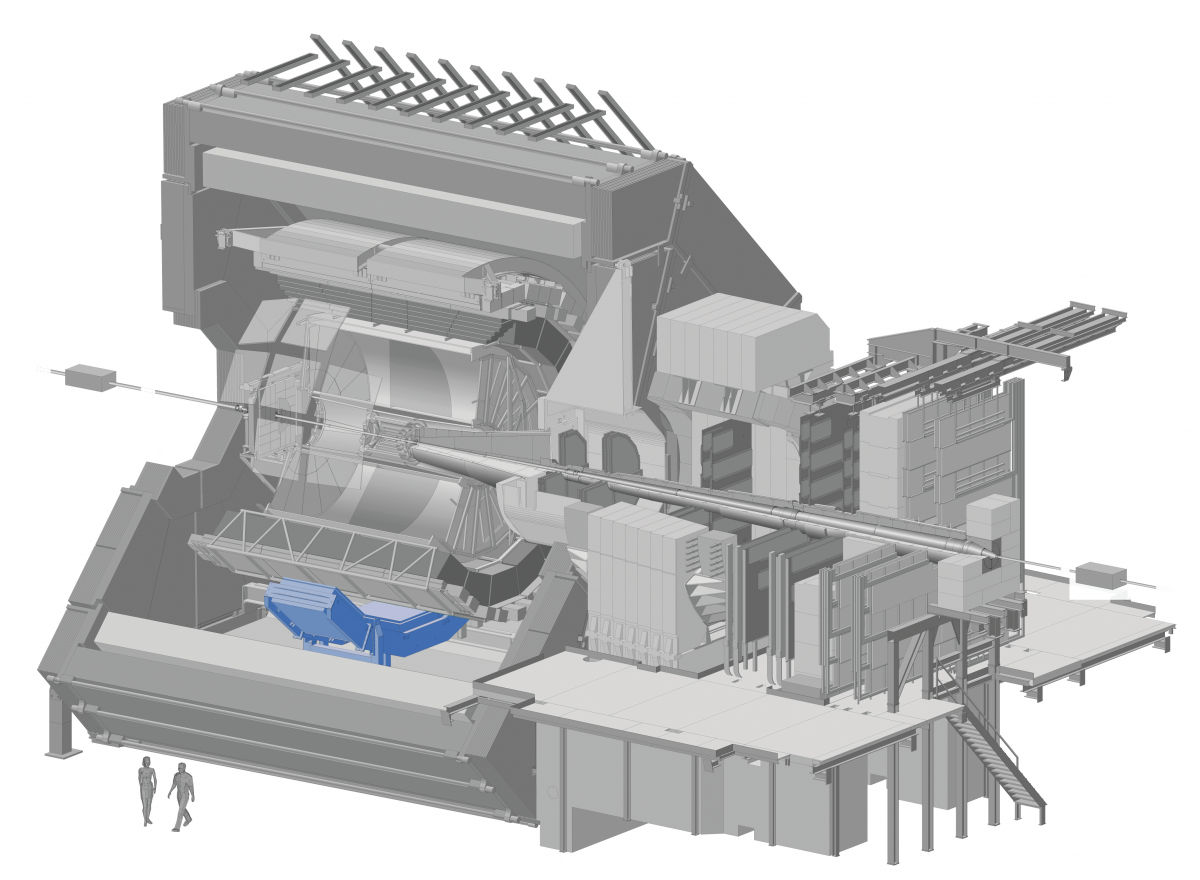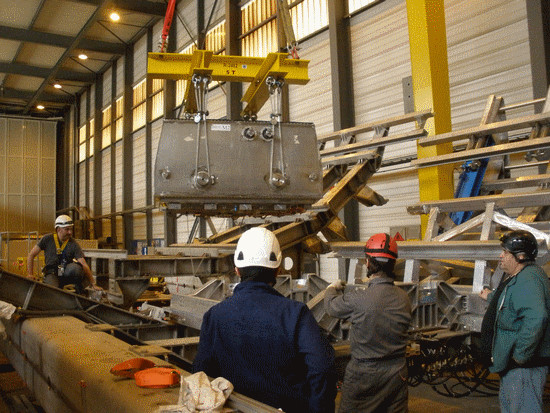More details on the ALICE Photon Spectrometer

The new calorimeter, called the “DCal”, is a large lead-scintillator detector with photo-diode readout placed in the opposite azimuth to the existing electromagnetic calorimeter (EMCal). This is the optimal configuration for the measurements of back-to-back jets, which originate in the interactions of ultra-high-energy quarks and gluons. The addition of the DCal in ALICE makes hadron-jet and jet-jet correlation measurements possible with high statistics over a very broad kinematic range, expanding ALICE's physics capabilities significantly
The ALICE Photon Spectrometer (PHOS) is a high-resolution photon detector that measures the photons coming out of the extremely hot plasma created in the lead-lead collisions at the LHC. Taking advantage of the completed long accelerator shut-down, the ALICE teams performed a major upgrade of the PHOS having replaced the readout and trigger systems and installed the brand-new module. The upgraded PHOS detector became faster and more stable with wider acceptance and improved photon identification.
Technical Details
The Photon Spectrometer PHOS is a high-resolution photon detector; its primary aim is to measure photon radiation from the hot QCD matter. PHOS has been designed to detect photons produced at angles around 90º in the center-of-mass system in a wide energy range up to 100 GeV and reconstruct neutral mesons decaying to photons.
The PHOS detector has been operated in the ALICE experiment since 2009. PHOS consisted of 3 full and 1 half module each containing 64x56 lead tungstate crystals covering the acceptance 260<phi<320 degrees and |eta|<0.13. These inorganic scintillating crystals have a strong temperature dependence of the light yield; in order to achieve a high energy resolution, the operating temperature of the PHOS is -25ºC.
The PHOS modules are divided into two parts. The crystal matrix is located in the cold volume at -25ºC, and the readout electronic is in the warm volume. To avoid condensation of air humidity in the cold volume, the PHOS modules with their cold and warm volumes were immersed into the air-tight boxes completely insulated from the outer ALICE environment and were blown by a flux of dry nitrogen. Before starting cooling, it takes a few months to reach low humidity inside the PHOS modules, which ensures a dew point below the operating temperature of -25ºC. Because of this fact, access to the PHOS electronics was impossible during the three years of ALICE running. The health of the PHOS systems was monitored by the detector control system, but if anything happened with the front-end cards, they could not be replaced nor repaired. It was like a satellite experiment: once launched in 2009, PHOS was working without any human access and was controlled only remotely via telemetry.
PHOS module seen from the rear side with front-end electronics. It is currently installed in the lab to repair electronics.
Several problems and pending tasks were accumulated over the three years of operation. Some front-end cards went out of order and needed repair. Readout time of 850 μs was adequate to cope with the low luminosity at the beginning of the ALICE operation in 2010. However, when the 2011 high-luminosity runs started it was realized that the readout time was rather long. This readout time can be improved by almost a factor of 3 by reprogramming the firmware of the front-end cards.
Other subsystems of the PHOS detector also required maintenance, repair, or reprogramming, such as the monitoring system, trigger, and cooling system. All these tasks can be fulfilled only with access to the inner parts of the PHOS. The PHOS team profited from the long shutdown (LS1) to repair broken front-end cards, reprogramming their firmware, and improving remote control of the internal PHOS systems.
The time of LS1 has also been used to assemble and commission the new, fourth PHOS module and one module of the Charge-Particle Veto detector (CPV). In the upcoming Run2 of the LHC, the one CPV and the four PHOS modules will be installed together with the new electromagnetic calorimeter DCAL, which will be sitting on the new support structure.

Fitting test of the PHOS module to the new DCAL-PHOS cradle which was built recently and is now waiting for both detector installation in 2014.
Technical data:
- 17920 lead-tungstate crystals(PWO) .
- distance to IP 4400 mm
- coverage in pseudorapidity -0.12; +0.12
- coverage in azimuthal angle 100°
- crystal size 22 × 22 × 180 mm3
- depth in radiation length of 20
- modularity 5 modules
- total area 8 m2
- total crystal weight 12.5 t
- operating temperature -25°C
- photoreadout APD
